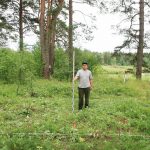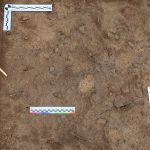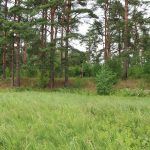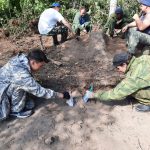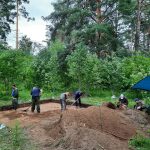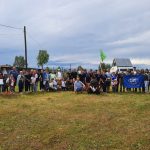Archaeological studies in the Kostroma region
In July 2022 the Kostroma archaeological expedition (KAE) together with the Institute of Archaeology named after A.H. Khalikov of the Tatarstan Academy of Sciences in the framework of the program “Structure, nature and dynamics of social and cultural interactions of the Late Bronze Age – Early Iron Age archaeological communities in the Volga region forest zone” studied the Voznesensk I settlement in the Galich district of the Kostroma region. The site was studied along with other archaeological monuments located nearby the Lake Galichskoye (Unorozh hillfort, Voznesenskoye IV settlement), under a grant of the Russian Geographical Society “Cultural heritage of the Galich land: historical reconstruction and archaeology. Interregional complex expedition”. The specialists of KAE, the Institute of Archaeology named after A.H. Khalikov of the Tatarstan Academy of Sciences, members of the RGS, volunteers from different regions and schoolchildren took part in the excavations. In the new season, pronounced ceramic sets and items made of stone were found, objects for radiocarbon dating were selected.
Voznesenskoye I settlement was found in 2019, the first excavations were carried out here in 2020. The settlement is multi-layered, can be approximately dated within the framework of the II millennium BC – the first half of the I millennium BC. The study of the site is of exceptional importance for understanding the traditions of making mesh ceramics in the Lake Galich area in the Late Bronze, the initial stage of Early Iron Age. Of great interest is the fragments of fatianoid pottery found in the lower layer of the monument, where also traced mesh ceramics. The appearance of some fragments of early mesh pottery, found on the Voznesenskoye I settlement, in combination with findings of fatianoid-type ceramics, may indicate that the population producing it borrowed fathianoid ceramic traditions. In the lower layer identified ceramics decorated with a small pits and “pearls” around the neck, a similar ornamental tradition is known on pottery from Pozdnyakovo and Akim-Sergeyevka sites.
The upper layer of the settlement, linked with mesh ceramics, is dated within the late IX – VII/VI centuries BC. Since the VI century BC the appearance of the material culture of settlements with mesh ceramics of the Kostroma Volga region has been changing due to the migration here of Ananyino traditions of the Vyatka-Vetluga culture bearers.
Further studies of the site is undoubtedly of great importance for solution of topical issues concerning of understanding of the genesis and development of mesh ceramics in the Kostroma Volga region. Besides, the importance of this site lies in the fact that findings from its cultural layer allow us to trace the development of mesh ceramics in the period preceding the appearance of Ananyino community on the banks of Lake Galichskoye, and in the subsequent stage of their assimilation with the local population.

